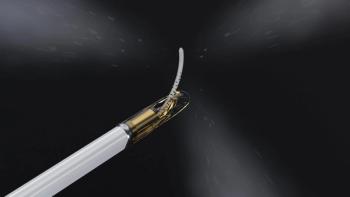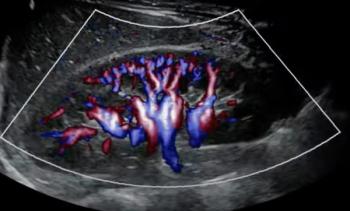
CT colonography standards foster exam's legitimacy
Virtual colonoscopy took a roller coaster ride last year. Some peer-reviewed studies touted the technique, while others favored conventional colonoscopy. Experts on each side complained of flaws in the other side's methodology. With that background, an international working group has developed a standardized reporting system for CT colonography.
Virtual colonoscopy took a roller coaster ride last year. Some peer-reviewed studies touted the technique, while others favored conventional colonoscopy. Experts on each side complained of flaws in the other side's methodology. With that background, an international working group has developed a standardized reporting system for CT colonography.
Dubbed C-RADS, for colonography reporting and data system, the scheme is intended to help describe CT colonography findings both in and outside the colon. It is akin to the breast imaging reporting and data system (BI-RADS) commonly used in mammography.
The development of C-RADS could have far-reaching effects on organizations that are currently withholding recommendation for the procedure. Among them is the American Cancer Society, which has kept a close eye on virtual colonoscopy, said Dr. Durado Brooks, director of prostate and colorectal programs at the ACS.
"One of the basic tenets for a screening test is that it provides consistent and reliable results. The development of C-RADS is very encouraging," Brooks said.
Report standardization is one of several steps needed to move virtual colonoscopy into the mainstream of colon cancer screening. Gaining reimbursement is another important barrier to overcome, said Dr. Perry J. Pickhardt, a visiting associate professor of radiology at the University of Wisconsin, Madison. Pickhardt's institution is one of the few in the country that is routinely reimbursed by HMOs for screening examinations.
Practice guidelines for radiologists are also essential to bring standardization to the practice as a whole. The American College of Radiology colon cancer committee, of which Pickhardt is a member, will soon publish a set of practice guidelines.
"The growth of CT colonography requires the radiological community to organize performance and reporting," said Dr. Michael Zalis, an assistant radiologist in abdominal imaging and intervention at Massachusetts General Hospital. "Common terms can bring consistency to studies from various sites."
Zalis presented a preliminary report on the standards at the Fifth International Symposium on Virtual Colonoscopy in October.
One part of the document describes polyp features, including lesion size, morphology, location, and attenuation.
Another describes polyp classifications linked with suggested follow-ups: normal colon studies followed by recommendations for routine screening, likely malignant colonic masses with a recommended follow-up of surgical consultation, and description of inadequate studies.
A third section lists extracolonic findings along with their classifications, including clinically insignificant liver cysts and potentially significant solid renal masses.
"At the program level, these guidelines will allow for better quality assurance and for comparison between programs. Accumulated C-RADS data could also help guide diagnostic algorithms with regard to polyp sizes and follow-up intervals," Pickhardt said.
Newsletter
Stay at the forefront of radiology with the Diagnostic Imaging newsletter, delivering the latest news, clinical insights, and imaging advancements for today’s radiologists.




























